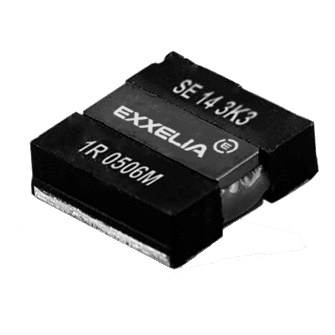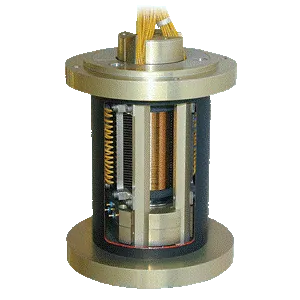
SVM Bus bars
Filtre
Large dimension bus bar
Custom example
Bus bar type
Laminated
Operating Temp
105°C
Conductor
Aluminum
Bus bar with accessories
Custom example
Bus bar type
Laminated
Operating Temp
105°C
Conductor
Aluminum
Partially laminated bus bar
Custom example
Bus bar type
Laminated
Operating Temp
105°C
Conductor
Copper
R-shaped bus bar
Custom example
Bus bar type
Epoxy powder coated
Operating Temp
130°C
Conductor
Copper
Aluminum powder coated bus bar
Custom example
Bus bar type
Epoxy powder coated
Operating Temp
130°C
Conductor
Aluminum
Sub-assembly bus bar
Custom example
Bus bar type
Epoxy powder coated
Operating Temp
130°C
Conductor
Copper
Multiple bends bus bars
Custom example
Bus bar type
Kobosol-4 molded
Operating Temp
105°C
Conductor
Copper
|
Name
|
Download
|
Bus bar type
|
Operating Temp
|
Conductor
|
Plating
|
Conductor thickness
|
Length
|
Height
|
Width
|
Current
|
Voltage Rated DC
|
Voltage Rated AC
|
|---|---|---|---|---|---|---|---|---|---|---|---|---|
| Large dimension bus bar | Laminated | 105°C | Aluminum | Nickel | 1mm | 1200mm | 8.5mm | 600mm | 1200A | - | 1600Vac | |
| High voltage bus bar | Laminated | 105°C | Copper | Tin | 5mm | 400mm | 11mm | 215mm | 650A | - | 1700Vac | |
| 90° angle bus bar | Laminated | 105°C | Copper | Nickel, Gold | 1mm | 90mm | 40mm | 80mm | 660A | 650V | - | |
| Bus bar with accessories | Laminated | 105°C | Aluminum | Nickel | 1.5mm | 350mm | 65mm | 390mm | 215A | 1000V | - | |
| High temp bus bar | Laminated | 130°C | Aluminum | Tin | 1.5mm | 550mm | 50mm | 450mm | 660A | 650V | - | |
| Very high temp bus bar | Laminated | 180°C | Copper | Tin | 1.5mm | 510mm | 50mm | 205mm | 660A | 350V | - | |
| Partially laminated bus bar | Laminated | 105°C | Copper | Tin | 1mm | 500mm | 40mm | 210mm | 300A | 350V | - | |
| R-shaped bus bar | Epoxy powder coated | 130°C | Copper | Nickel, Gold | 3mm | 350mm | 65mm | 390mm | 660A | 1650V | - | |
| Bus bars trio | Epoxy powder coated | 130°C | Copper | Nickel, Nickel | 4mm | 290mm | 25mm | 90mm | - | - | 17000Vac | |
| Aluminum powder coated bus bar | Epoxy powder coated | 130°C | Aluminum | - | 6mm | 510mm | 50mm | 110mm | 300A | - | 1650Vac | |
| Sub-assembly bus bar | Epoxy powder coated | 130°C | Copper | Tin | 2mm ~ 3mm | 500mm | 105mm | 320mm | 550A | 1200V | - | |
| Double T bus bar | Kobosol-4 molded | 105°C | Copper | - | 3mm | 700mm | 12mm | 80mm | - | - | - | |
| Multiple bends bus bars | Kobosol-4 molded | 105°C | Copper | - | 2mm | 450mm | 35mm | 90mm | - | - | - |

New
Large dimension bus bar
Custom example

New
High voltage bus bar
Custom example

New
90° angle bus bar
Custom example

New
Bus bar with accessories
Custom example

New
High temp bus bar
Custom example
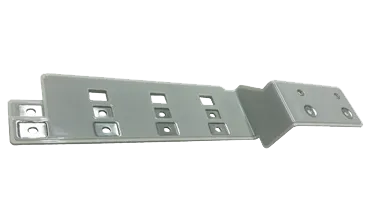
New
Very high temp bus bar
Custom example
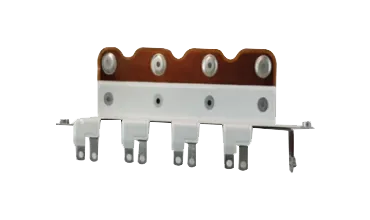
New
Partially laminated bus bar
Custom example

New
R-shaped bus bar
Custom example

New
Bus bars trio
Custom example

New
Aluminum powder coated bus bar
Custom example
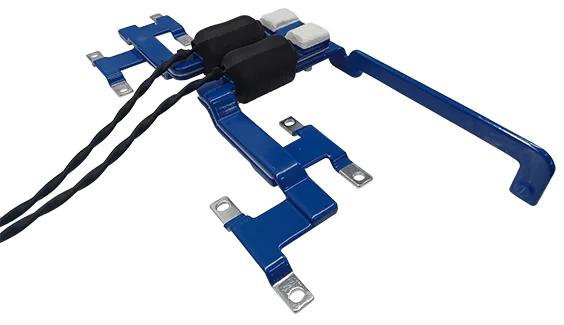
New
Sub-assembly bus bar
Custom example
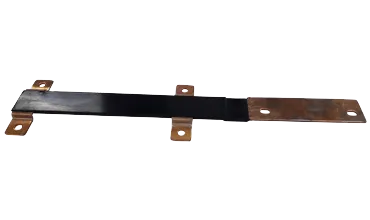
New
Double T bus bar
Custom example

New
Multiple bends bus bars
Custom example
SVM Bus bars
Exxelia SVM product offer includes:
Laminated bus bars - up to 4 layers for complex requirements
Powder coated bus bars - using epoxy powder coating for superior electrical insulation properties
PVC molded bus bars - overmolding with Kobasol-4, a soft and flexible insulation even after molding
Bare copper bus bars - multiple bends / formed bus bars using Copper as per ASTM B152 C11000 (ETP)
The following finishes are also available: tin, nickel, silver or gold plating.

Frequently Asked Questions
Find answers to the most frequently asked questions about our products and services.
Still have questions ?
Can’t find the answer you’re looking for ? Please contact with our customer service
Contact


